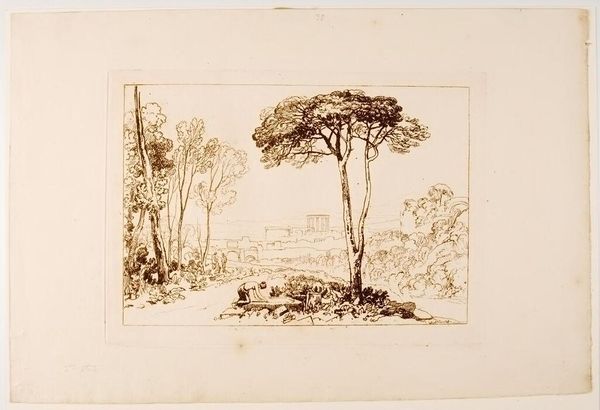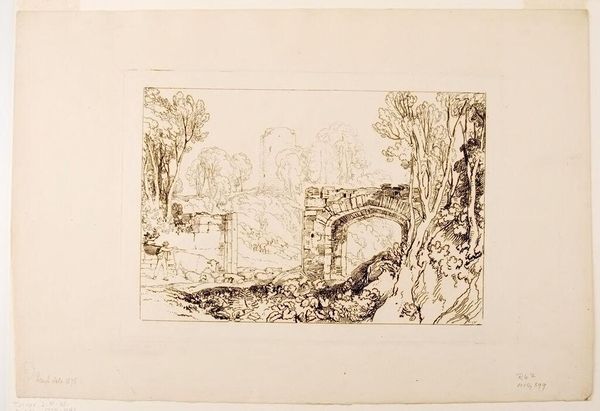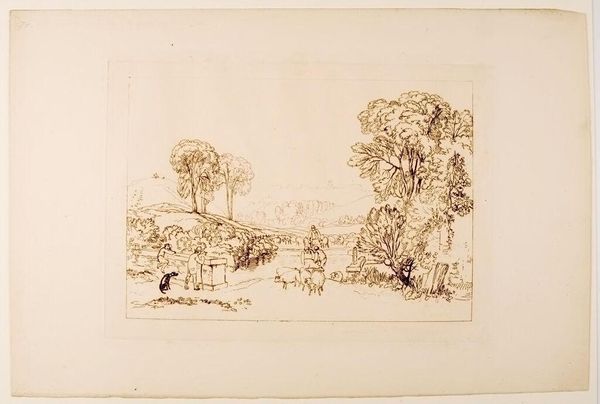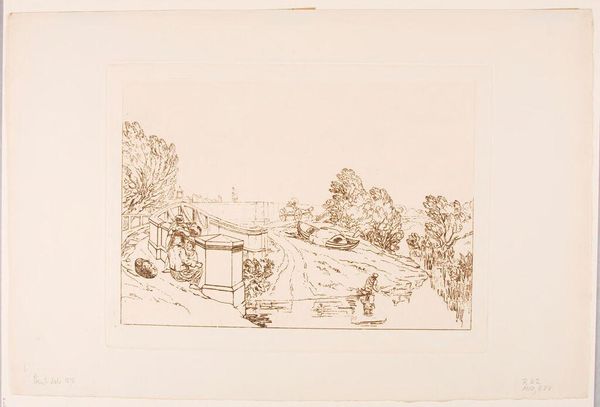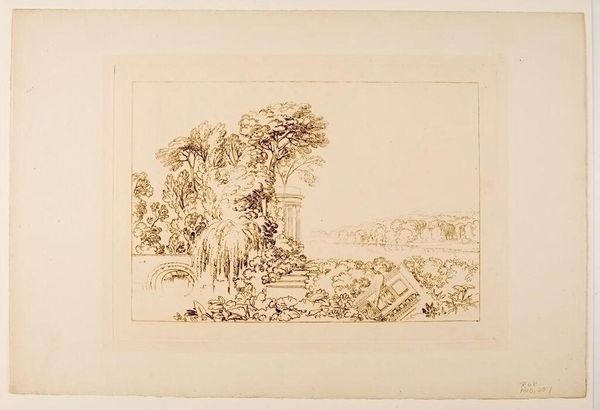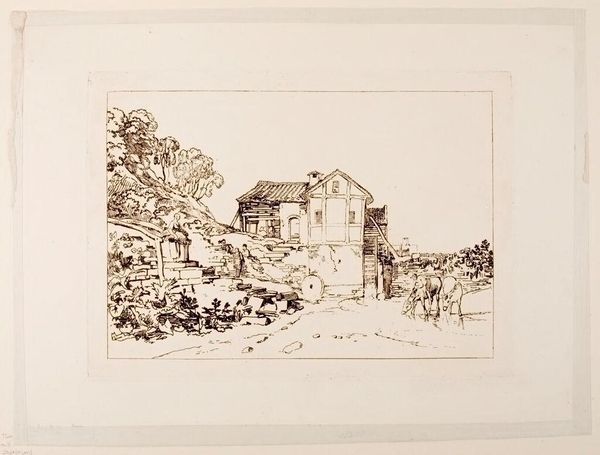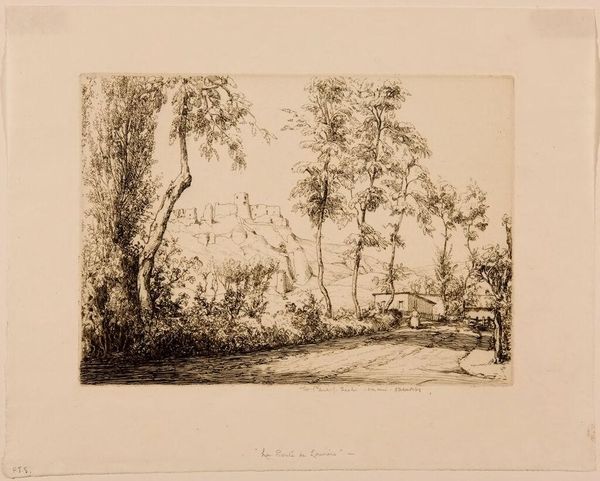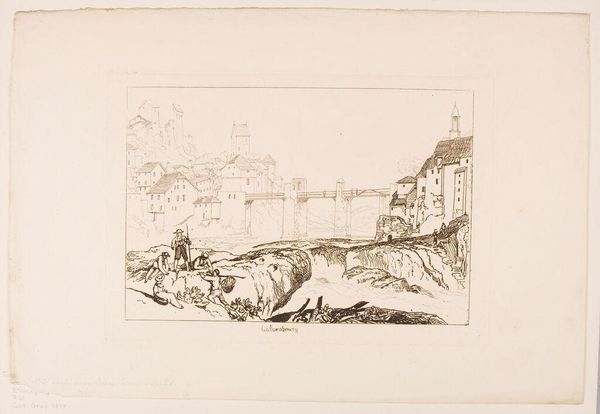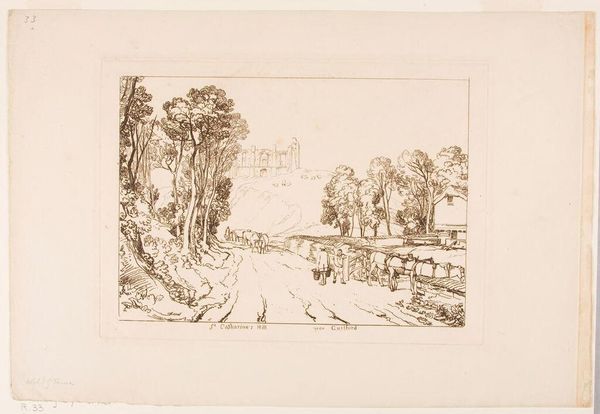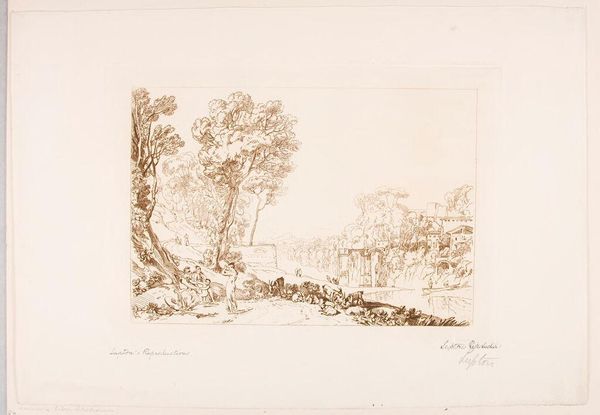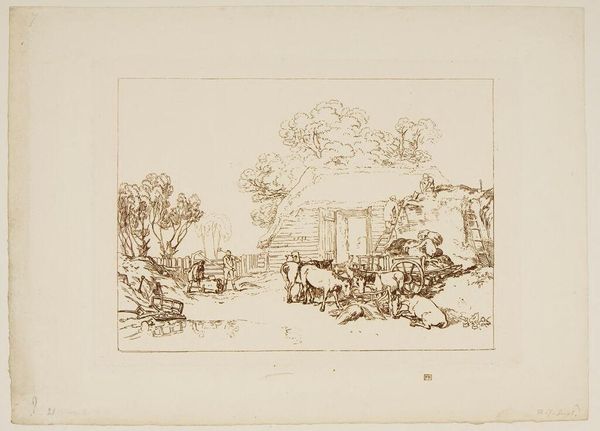
Copyright: CC0 1.0
Curator: Turner's "Christ and the Woman of Samaria," depicts a pivotal biblical encounter, though with a rather curious compositional choice, wouldn't you say? Editor: It feels more like a stage set than a religious scene. There's a deliberate theatricality to the ruins and the figures positioned almost as props. Curator: Indeed. Turner often used historical or biblical subjects to explore broader themes of societal change and the decay of empires. Perhaps Samaria, in its ruined state, served as a reflection of England's own anxieties. Editor: Or perhaps it's Turner acknowledging the political landscape of the time, using biblical narratives as a screen for critiquing contemporary power structures. A subtle yet biting commentary. Curator: Maybe, but I think it's equally about Turner's own evolving relationship with landscape and the sublime, the power of nature against human constructs. Editor: Whatever his intention, the image prompts us to consider the multiple layers of meaning inherent in artistic representation. Curator: Exactly. It's a reminder that even the most seemingly straightforward narratives can hold complex and challenging ideas.
Comments
No comments
Be the first to comment and join the conversation on the ultimate creative platform.
